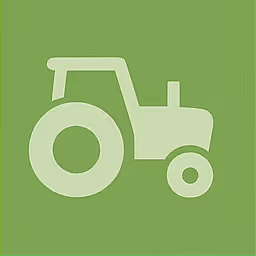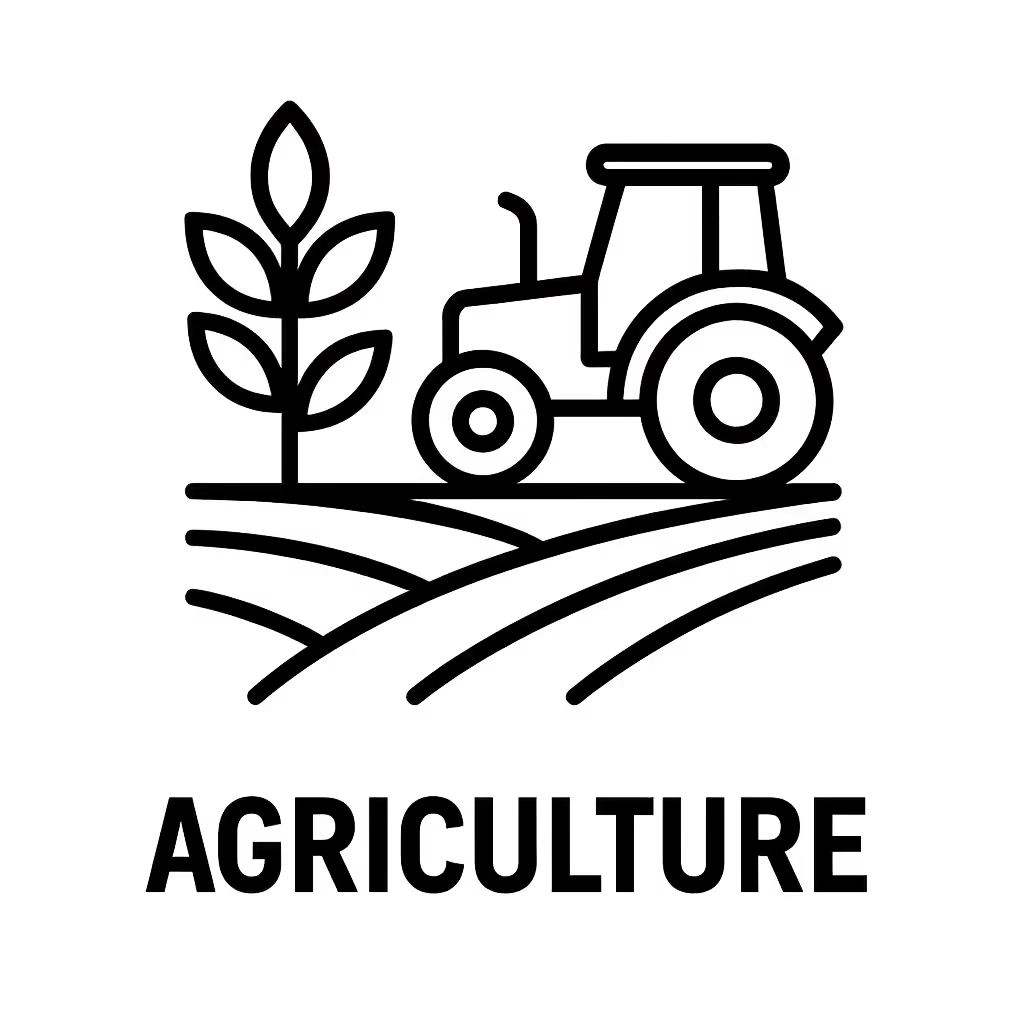Biotechnology Research & Development
Learning Objects
Dive into Wisc-Online’s rich collection of learning objects — bite-sized, interactive, and designed for real learning. These modular digital tools include animations, drag-and-drop exercises, quizzes, videos, and more. You can explore topics across STEM, arts, humanities, career skills, and beyond. Each learning object is crafted to help learners actively engage with content—reviewing, applying, self-checking—in a way that’s flexible and self-paced.
Filter
Thank you! Your submission has been received!
Oops! Something went wrong while submitting the form.
Learning Object
A Typical Animal Cell
In this interactive object, learners identify the parts of an animal cell and its organelles.
Tags +
cell, organelles
A Typical Animal Cell (Video)
In this video, learners view the parts of an animal cell and its organelles.
Tags +
cell, organelles
Acid-Base Reactions (Screencast)
Learners view several movie clips that demonstrate the use of an indicator to follow the neutralization reaction that occurs when an acid and a base are mixed. Students test their knowledge in a series of questions. Immediate feedback is given.
Tags +
Acid/Base Balance (Screencast)
Students read about how acid/base balance affects a person's health. This activity includes animation.
Tags +
acid, balance, base, ph
Analyzing Medical Terms: Urinary System
Students identify the meaning of urinary system word parts to analyze and define medical terms.
Tags +
medical, terminology
Animal Use in Research
The Animal Welfare Act, or AWA, gives protection to animals used in research, education, and entertainment. Explore ethical use and some of the current alternatives in this module.
Tags +
animal, animal research, Animals in research, dog, mice, mouse, NHP, non-human primates, pig, rat
Antihypertensive Drugs
In this interactive object, learners sort antihypertensive medications into categories. Descriptions are provided.
Tags +
Biomolecules - The Lipids (Video)
In this animated object, learners examine neutral fats, phospholipids, and cholesterol. The molecular formula and general function for each are shown.
Tags +
acids, cholesterol, fats, fatty, lipids, phospholipids, saturated, steroids, unsaturated
Biomolecules: The Carbohydrates (Video)
Viewers watch an introduction to monosaccharides, disaccharides, and polysaccharides. The processes for dehydration synthesis and hydrolysis.
Tags +
Biology, carbohydrates, cellulose, dehydration, diet, disaccharides, glucose, hydrolysis, lactose, molecules, monosaccharides, polysacchrides, starch
Biomolecules: The Proteins (Video)
Explore what proteins are, their structure, and their functions.
Tags +
animal proteins, biomolecules, how to proteins work, plant proteins, protein, what are proteins
Biosecurity: Finding Sources of Disease Transmission Risk
By the end of this module, you’ll be able to: - List four categories of disease agent sources- Discover conditions when disease transmission is likely to occur- Describe the means of disease transmission in a given situation
Tags +
biosecurity, chicken, cow, disease, farm, infection, pig, transmission
Biosecurity: Routes of Infection and Means of Transmission
In this module, you'll be able to :- Identify five routes of infection- Describe how diseases are transmitted in animals
Tags +
biosecurity, chicken, cow, disease, farm, infection, pig, transmission
Blood Groups
In this animated and interactive object, learners examine ABO blood antigens and Rh antigens and their compatibility.
Tags +
ab, agglutinations, antigen, blood, rh, rhgam, type
Body Sections and Divisions of the Abdominal Pelvic Cavity
In this animated activity, learners examine how organs are visualized in three dimensions. The terms “longitudinal,” “cross,” “transverse,” “horizontal,” and “sagittal” are defined. Students test their knowledge of the location of abdominal pelvic cavity organs in two drag-and-drop exercises.
Tags +
abdominalpelvic, coronal, epigastric, hypogastric, quadrant, sagittal, transverse, upper
Body Sections and Divisions of the Abdominal Pelvic Cavity
In this animated activity, learners examine how organs are visualized in three dimensions. The terms “longitudinal,” “cross,” “transverse,” “horizontal,” and “sagittal” are defined. Students test their knowledge of the location of abdominal pelvic cavity organs in two drag-and-drop exercises.
Tags +
abdominalpelvic, coronal, epigastric, hypogastric, quadrant, sagittal, transverse, upper
Boyle's Law (Screencast)
Learners apply the principles associated with Boyle’s Law.
Tags +
boyles, law, pressure, temperature, volume
Calculating Formula Weight and Molecular Weight
In this interactive object, learners calculate formula and molecular weights by working through five examples and two problems.
Tags +
Calculating Gas Density from Standard Molar Volume
Learners calculate gas density from the standard molar volume and observe how the density increases with the increasing molecular weight of the gas.
Tags +
Capillary Dynamics (Screencast)
In this screencast, learners examine the movement of fluid within the vascular system.
Tags +
anatomy
Carbohydrate Digestion (Screencast)
In this screencast, learners examine the steps of carbohydrate digestion.
Tags +
amylase, atp, carbohydrates, digestion, disaccharides, energy, enzymes, liver, monosaccharides, pancreas, pancreatic, polysaccharides, salivary
Cardiac Marker Case Studies
The learner will learn how to understand, interpret, and correlate cardiac marker test results.
Tags +
cardiac, ck, creatine, interpreting, kinase, laboratory, markers, mb, tests, troponin
Categories of Acquired Immunity
In this learning activity you'll evaluate the immune response including active, passive, natural, and artificial immunity.
Tags +
Active, Artificial immunity, Natural, Passive, Types of immunity, What are the different types of immunity
Cell-Based Models: Organoids and Organs-on-Chips
In this module, you will explore the many kinds of cell models and learn about the ways they differ from animal models.
Tags +
cell-based model, Organoid, Organs-on-Chips
Chain of Infection
In this interactive object, learners identify nursing actions that help to prevent the spread of infection.
Tags +
agents, host, isolation, reservoir, transmission, vectors
Chain of Infection
In this interactive object, learners identify nursing actions that help to prevent the spread of infection.
Tags +
agents, host, isolation, reservoir, transmission, vectors
Changes in Our World: Chemical and Physical (Screencast)
In this screencast, learners examine the kinds of physical and chemical changes that occur in substances.
Tags +
chemical, Physical
Chemical Formulas
Students read an explanation of chemical formulas in this animated activity. A quiz completes the object.
Tags +
chemical
Chemistry Math - Solving a Formula (Screencast)
Students use algebra to rearrange formulas and solve for the missing volume, density, or mass quantity.
Tags +
conversions, density, gas, laws, temperature
Collecting Biological Evidence
Explore how to collect a fresh or dry blood specimen and prepare it for the crime lab.
Tags +
Blood, Detective, Evidence, Forensic, Police, Swab, Toolkit
Common Types of Oxidation-Reduction Reactions (Screencast)
Learners identify combination, decomposition, displacement, and combustion types of redox reactions. They also watch a video clip that demonstrates the reaction of sodium and water.
Tags +
oxidation, reduction
Components of a Prokaryote (Screencast)
In this learning activity you'll assemble the components of a prokaryotic cell and match the names and functions with each structure.
Tags +
prokaryote, what are the parts of the cell, What is a prokaryotic cell
Construction of the Cell Membrane
In this learning activity you'll study the structure of the cell membrane and construct it using the correct molecules.
Tags +
Biochemistry, Biology, Biomolecules, Classroom resources, Educational resources, eLearning, how does a cell membrane work, Interactive learning, Learning activities, Lipid bilayer, membrane, Membrane function, Membrane proteins, Membrane structure, Molecular biology, Molecular structure, Online learning, Phospholipids, Plasma membrane, Student engagement, Study aids, what are the parts of a cell membrane
Construction of the Cell Membrane (Video)
In this video you'll study the structure of the cell membrane and construct it using the correct molecules.
Tags +
Biology, how does a cell membrane work, membrane, what are the parts of a cell membrane
Controlling pH
Learners view an animated presentation showing how the pH level of a cleaning solution is controlled in a closed-loop system in a manufacturing setting. A quiz completes the activity.
Tags +
acid, alkaline, analytical, control, level, ph, reagent
Conversion Between Mass and Moles of an Element (Screencast)
Atomic weights are used to convert the mass of a sample into the number of moles of the element in the sample and vice versa. Four examples are provided for practice.
Tags +
atomic weight, mass, moles
Cranial Nerves
In this highly interactive and animated object, learners complete three exercises to identify the cranial nerves and their functions.
Tags +
assessment, cranial, function, innervation, motor, nerve, nerves, neuro, neurological, sensory
Determining Empirical and Molecular Formulas (Screencast)
Learners follow a four-step process to determine the empirical formula of a compound from the masses of its constituent elements. The molecular formula is determined in a fifth step using the molecular weight of the compound.
Tags +
mass, percent
Dietary Manager Training: Digestion and Absorption of Carbohydrates (Screencast)
Learners follow the path of a carbohydrate food from consumption through digestion to absorption into the bloodstream. In a matching exercise, students identify the main type of carbohydrate found in four different foods.
Tags +
digestion
Dietary Manager Training: Understanding the Nutrition Facts Label (Screencast)
Learners take a close look at the information on product labels concerning fat, fiber, and serving sizes. A quiz follows the lesson.
Tags +
culinary, label, nutrition
Differentiating Acid-Base Disturbances
Through the use of symbols and words, the learner reviews the etiologies, symptoms, and treatment of respiratory and metabolic acid-base disturbances.
Tags +
acid, acidosis, alkalosis, base, imbalances, metabolic, ph, pictogram, respiratory
Dilution of Hydrochloric Acid
In this interactive object, learners examine how to properly dilute hydrochloric acid.
Tags +
Diode Approximations (Screencast)
This learning object introduces the three approximations of a diode.
Tags +
approximation, diode
Distance Fallen vs. Stain Diameter (Screencast)
Learners observe how a blood drop in flight continually accelerates and increases in velocity over time. As the drop falls, resistance accumulates. The increase in stain diameter relative to distance of a typical 50 ml drop of blood is represented here. This activity has audio content.
Tags +
Blood, forensic, Forensics, friction, gravitational Acceleration
Documentation of Bloodstain Evidence (Screencast)
Students will learn how to document bloodstains using roadmapping equipment materials
Tags +
Bloodstain, Documentation, Materials, Roadmapping
Draize Alternatives
Thousands of health and beauty products claim to be cruelty free - but do you know how to spot a fake? Test your knowledge and explore the exciting science that's delivering cutting-edge and better alternatives to animal testing in this interactive experience. Make decisions as both a beauty blogger and a research scientist as you navigate animal testing in the health and beauty industry.
Tags +
alternative to anumal testing, BioLeap, Draize, NAVS
Dusting for Fingerprints
Discover how to select the correct fingerprint powder, the proper dusting and collecting techniques, and how to fill out an evidence card.
Tags +
collecting fingerprints, criminal justice, dust for prints, evidence collection, forensic science
Endospores (Screencast)
Learners read about endospores and view video clips demonstrating spore staining procedures. Correctly stained slides are shown.
Tags +
Enthalpy (Screencast)
In this interactive object, learners calculate the amount of heat evolved or absorbed in chemical reactions. Four practice problems are provided.
Tags +
Equilibrium
Equilibrium plays a vital role in our lives. We'll show you how the equilibrium formula works in real life using our friend the chicken.
Tags +
acidosis, alkalosis, balance, emphysema, equilibrium, product, reactant
Gas Volume and Molar Amount
In this brief object, learners examine the direct relationship between the volume of a gas sample and the number of moles of gas. A problem is presented so students can test their knowledge of Avogadro's Law.
Tags +
Gas Volume vs. Pressure (Boyle's Law)
Boyle's Law states that gas volume varies inversely with the pressure at constant temperature and is described by the equation PV = constant. An example of a sample of gas at two conditions of P and V is used to illustrate the law.
Tags +
Gastrointestinal System Anatomy
In this screencast, learners review the parts of the gastrointestinal system and then check their knowledge in a matching exercise.
Tags +
anatomy, gastrointestinal, gi
Glands of the Endocrine System
Learners identify nine glands in a matching exercise.
Tags +
endocrine, glands, system
Glucose Metabolism for the Endocrine System (Screencast)
In this screencast, learners read about the seven hormones that help regulate blood glucose.
Tags +
cortisol, epinephrine, gh, glucagon, gluconeogenesis, glucose, glycogen, hormone, insulin
Gram Stain Procedure (Screencast)
Learners view video clips demonstrating Gram's staining procedure. Correctly stained slides are shown.
Tags +
Heart Anatomy Review
The user completes a fill-in-the-blank exercise to review the anatomy of the heart.
Tags +
anatomy, heart, physiology
Helpful Microbes in Your Daily Life (Screencast)
In this screencast, learners read how microbes in such items as yogurt, bread, insulin, and insect sprays improve our lives.
Tags +
microbes
Hematologic Cells and their Functions: Blood Cell Identification (Screencast)
This screencast will help the student identify normal blood cells and their functions. This will include the identification of red blood cells, five types of white blood cells, and platelets.
Tags +
basophils, blood, cells, eosinophils, hematology, lymphocytes, monocytes, neutrophils, platelets, red, white
How Pressure Changes Boiling Temperature
Learners study the effect that pressure has on boiling temperatures. Once a liquid has reached a full boil, additional heat does not raise the liquid’s temperature; however, pressure can vary the boiling point of a liquid. A brief quiz completes the activity.
Tags +
boiling, changes, how, point, pressure, temperature, vary
How to Use a Microscope
Learners examine the function of each part of a microscope and follow step-by-step instructions on how to focus on a specimen. They also review the proper use and care of a microscope and test their knowledge in two drag-and-drop exercises.
Tags +
adjustment, coarse, focus, immersion, lens, microscope, oil, parfocal, slides
Hypersensitivity
In this interactive object, learners review the four types of hypersensitivity and check their knowledge of alternative names, mediators, and various antigens and disease conditions.
Tags +
Ideal Gas Law
In this interactive object, learners use the ideal gas law to solve a practice problem.
Tags +
Identifying Compounds and Ions
Learners complete an exercise to match chemical formulas with the names of binary compounds, tertiary compounds, and ions.
Tags +
Identifying Eukaryotic Animal Cell Organelles
In this animated object, learners are introduced to the structure and function of animal cell organelles.
Tags +
cell, Classroom resources, cytoplasm, cytoskeleton, cytosol, Educational resources, eLearning, endoplasmic, eukaryotic, golgi, Interactive learning, Learning activities, lysosome, mitochondria, Online learning, organells, peroxisome, reticulum, ribosomes, Student engagement, Study aids
Introduction to Safety in the Chemistry Lab (Video)
Learners read about lab equipment and basic safety measures. In a quiz, they view photos and determine if the lab technicians pictured are using safe practices.
Tags +
beaker, chemical, lab, protection, safety
Introduction to the Periodic Table (Screencast)
In this screencast, students read about the basic organization and structure of the periodic table of elements. Students identify elements as belonging to a group, a period, or neither.
Tags +
atomic, chemistry, elements, number, periodic, symbol, table, weight
Isotopes
The definition of an isotope is illustrated using the three isotopes of carbon. The three isotopes of hydrogen are discussed as exceptions.
Tags +
Lewis Dot Structures of Covalent Compounds
In this interactive and animated object, students distribute the valence electrons in simple covalent molecules with one central atom. Six rules are followed to show the bonding and nonbonding electrons in Lewis dot structures. The process is well illustrated with eight worked examples and two interactive practice problems.
Tags +
Major Muscles of the Human Body (Screencast)
In this screencast, learners will match the muscle names to their corresponding locations in the human body.
Tags +
body, human, medical, muscles, pronounciation
Metabolic Pathways
In this screencast, learners categorize different metabolic activities as catabolic or anabolic and follow a glucose molecule through the processes of glycolysis, aerobic respiration, and fermentation.
Tags +
catabolic, fermentation, metabolism, pathways, physiology
Molarity
Students solve a molarity problem in a drag and drop exercise.
Tags +
Mole Ratios in Chemical Equations
Learners use the coefficients in a balanced equation to develop the mole ratios of reactants and products involved in the reaction. Five interactive examples illustrate the method, and students test their knowledge by working four problems.
Tags +
Movement Terminology
In this animated object, the learner examines 17 types of joint movement.
Tags +
abduction, adduction, eversion, flexion, inversion, protraction, rotation, supination
Muscle and Connective Tissue
In this colorful and interactive object, learners examine the structure and function of muscle and connective tissues. A quiz completes the activity.
Tags +
adipose, areolar, bone, cardiac, cartilage, collagen, connective, contraction, elastic, fibrous, matrix, reticular, skeletal, smooth, striated
Naming Binary Ionic Compounds Containing Fixed Oxidation State Cations
Learners examine a table containing the names of common cations and anions.
Tags +
Naming Binary Ionic Compounds Containing Variable Oxidation State Cations (Screencast)
Roman numerals are used to identify the charges on metal cations having multiple oxidation states. Five examples are provided for practice.
Tags +
Naming Compounds Containing Polyatomic Ions
Learners examine a table of common polyatomic ions. Eight examples are provided for practice.
Tags +
Nerve Action (Screencast)
In this animated object, learners examine how the sensory, motor, mixed, and reflex nerves work in the human body.
Tags +
anatomy, brain, mixed, motor, nerves, nervous, physiology, reflex, sensory, system
Nervous and Epithelial Tissue
In this colorful, interactive object, learners examine nervous and epithelial tissue composition and function. A quiz completes the activity.
Tags +
axon, columnar, cuboidal, dendrite, epithelial, fiber, nerve, nervous, neuroglia, neuron, squamous, stratified, tissue
Osmotic Pressure (Screencast)
Learners conduct an experiment to illustrate how a greater number of particles in a "vessel" increases osmotic pressure.
Tags +
fluid, movement, oncotic, osmosis, solvent, water
Oxidation-Reduction Reactions
Learners examine the meaning of oxidation, reduction, and half-reaction, and watch a film showing the deposition of copper metal from the reduction of copper (II) ion by aluminum. A brief quiz completes the activity.
Tags +
Pathology of Cardiac Disease (Screencast)
In this animated activity, learners examine the symptoms of four cardiac conditions: coronary artery disease, myocardial infarction, congestive heart failure, and valvular disease.
Tags +
artery, cardiac, congestive, coronary, disease, failure, heart, infarction, myocardial, valvular
Percent Composition of Compounds (Screencast)
Learners examine the method used to calculate the mass percent of an element in a compound. Three examples and one problem illustrate the method.
Tags +
Pharmacologic Management of Diabetes Mellitus (Screencast)
In this screencast, learners examine the action of insulin and other antidiabetic medications.
Tags +
diabetic, disease, drugs, hypoglycemics, illness, interventions, medical, medications, nursing, pharmacology, surgical, treatment
Precipitation Reactions
In this interactive and animated object, learners use solubility rules to predict when an insoluble ionic compound will precipitate in a double replacement reaction. Step-by-step examples are given.
Tags +
Product Yields in Chemical Reactions (Screencast)
Learners examine the meaning of theoretical yield, actual yield, and percent yield. They test their knowledge by solving two problems.
Tags +
chemical reaction
Protein Synthesis (Video)
In this video, you'll review how every protein molecule of an organism is synthesized.
Tags +
acid, amino, best protein synthesis video, dna, how does protein synthesis work, how is protein made, protein, ribosomes, rna, synthesis, what is protein synthesis
Reading a Triple Beam Balance
Students identify the parts of a triple beam balance and practice measuring the mass of objects.
Tags +
balance, beam, hands-on learning, laboratory equipment, mass, mass measurement, measurement, measurement tools, measuring mass, metric, parts of a balance, reading, scales, science education, science experiments, scientific measurements, weighing objects
Regional Body Parts
In this interactive object, learners identify a person's regional body parts.
Tags +
anatomy, human
Sample Size & Reduction
Discover the fascinating intersection of veterinary science and human medicine in this module. "Can Animal Studies Predict Human Results?" Dive into groundbreaking research and ethical debates as we explore how animal testing influences the future of medical breakthroughs by unraveling the complexities of animal and human testing.
Tags +
animal studies, BioLeap, NAVS, Negative Outcomes, Positive Outcomes
Science Lab Equipment - Pt 1 (Screencast)
In this screencast we are introduced to the lab equipment used to contain and dispense chemicals.
Tags +
chemistry, lab, science, tools
Shapes of Simple Molecules - Part 1 (Screencast)
In this animated and interactive object, learners observe how two, three, or four groups of electrons around the central atom cause the shape of the molecule to be linear, trigonal planar, bent, tetrahedral, or pyramidal. Seven examples and eight interactive questions are provided.
Tags +
Skin and the Integumentary System
Learners examine the structure and function of skin including the production of melanin.
Tags +
anatomy, dermis, eLearning, epidermis, follicles, glands, hair, integumentary, interactive educational activity, melanin, melanin production, melanocytes skin, physiology, sebum, skin function, skin structure, sweat, tissue
Solubility of Ionic Compounds in Water
Learners view movie clips to determine the solubility of two ionic compounds. They also examine a solubility chart and predict the solubility of compounds.
Tags +
insoluble, rules, salt, solubility, soluble
Stoichiometry
In this interactive lesson, students examine the quantitative relationship between chemicals in a balanced mathematical equation.
Tags +
chemistry, conversion factor, grams to moles, moles to mass
Summary of Bloodstain Evidence Documentation (Screencast)
This activity will summarize the bloodstain evidence documentation process.
Tags +
blood
Superficial Skeletal Muscles (Screencast)
In this screencast, learners read descriptions of the actions of the superficial skeletal muscles and see their locations.
Tags +
action, muscle, muscles, names, skeletal
Surface Tension of a Blood Drop (Screencast)
This screencast shows how blood droplets are held together by a strong cohesive molecular force that produces surface tension in each drop and on the external force. Surface tension pulls the surface molecules of a liquid toward its interior, decreasing the surface area and causing the liquid to resist penetration.
Tags +
blood, forens, spheroid, Surface tension, teardrop
Taffy Atoms
Students read brief descriptions of atoms, molecules, elements, and compounds, and complete a matching exercise that pictures these particles and molecules as pieces of taffy.
Tags +
atoms, chemistry, compounds, elements, molecules
The 3 Rs: Replacement, Reduction and Refinement
Practice how to make research decisions using the 3 Rs.
Tags +
lab, reduction, refinement, replacement, research











